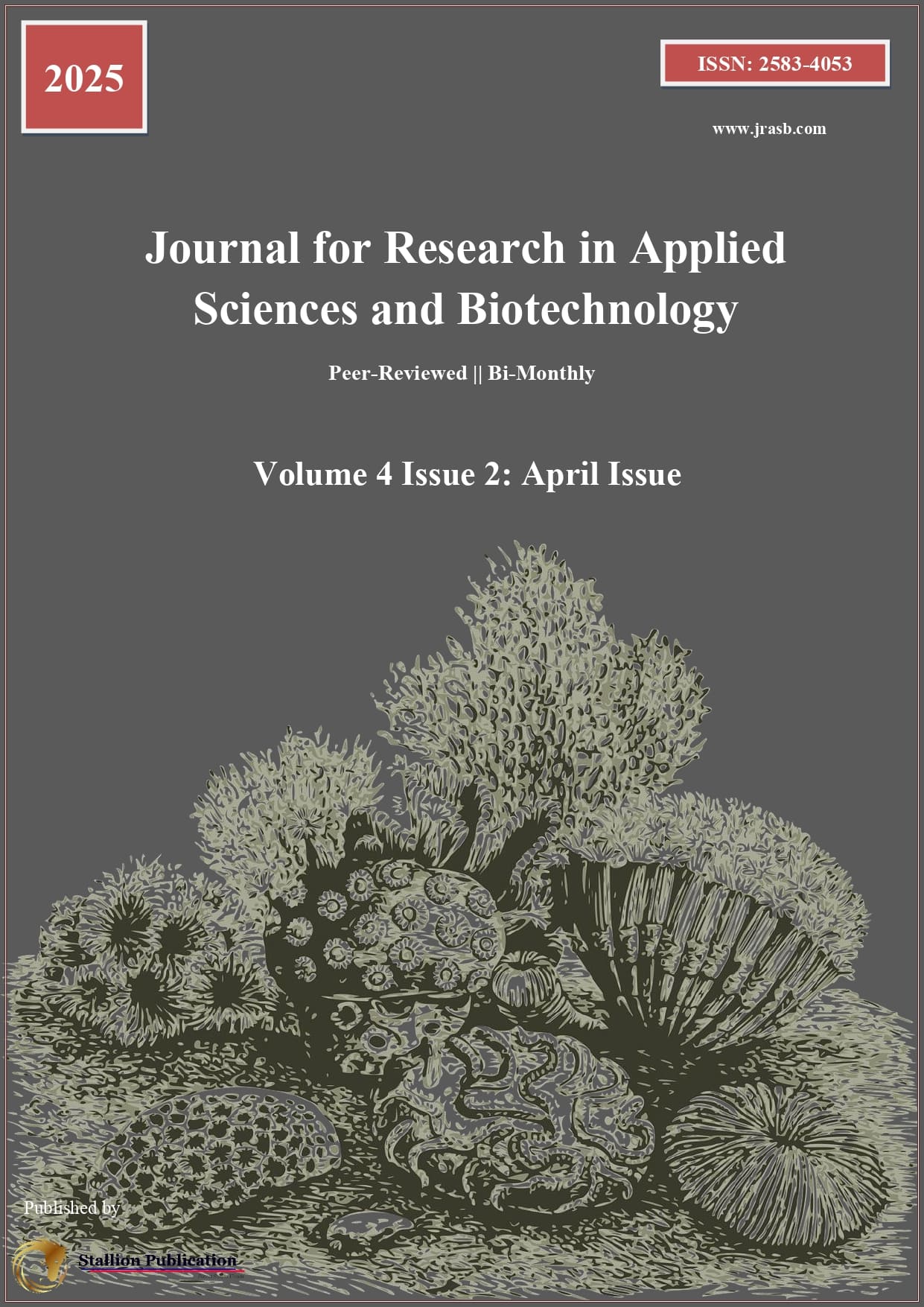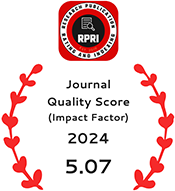Finite Difference Method for Mechanical Adaptation of Arteries to Sustained Hypertension
DOI:
https://doi.org/10.55544/jrasb.4.2.5Keywords:
Hypertension, Adaptation, IncompressibleAbstract
The dynamics of arterial wall remodelling under hypertensive conditions is discussed here. Sustained hypertension was simulated by a step increase in blood pressure. The arterial wall was considered to be a thick walled tube made of non linear elastic incompressible material the driving stimuli for the geometric adaptation are the normalized deviations of wall stresses from their values under normotensive conditions. Meachanical adaption is driven by the difference between the area compliance under hypertensive and normotensive conditions. The predicted time course of the geometry and mechanical properties of arterial wall are in good qualititative agreement with published findings. Crank Nicolson finite difference scheme is used for computation purpose which is fast conversing in comparision to the method used by Rachev et al (1998).
Downloads
References
Agonafer, D., Watkins, C.B. Cannon, J.N. (1985) - Computation of steady now in a two dimensional arterial model. J. Biomechanics Vol. B. No. 9. pp. 695-701.
Bhardwaj, B.K. Mabon, R. F. and Giddens. D.O. (1982)-Steady flow in a model of the human carotid bifurcation. Part 1 Flow visualisation J Biomechanics, 15, pp. 349-362.
Bitoum, J.P. and Bellet, D. (1986) Blood flow through a stenosis in microcirculation-Biorheology-23, pp. 51-61.
Chakrabarty, S. And Dutta, A. (1992) Pulsatile blood flow in a porous stenotic artery using a suitable mathematical model. Mathematical Computation Modelling, Vol. 16, No. 2, pp. 35-54.
Chakrabarty, S. and Dutta, A-: (1992b)Dynamic response of stenotic blood flow in vivo. Mathematical Computational Modelling. Vol. 16, No. 2, pp. 3-20.
Chang, L.J. and Tarbell, J.M. (1985) Numerical simulation of fully developed sinusodial and pulsatile (physiological) flow in curved tubes. J. Fluid Mechanics, 161. pp. 175-198.
Chaturani, P-and Swamy, R. (1986) - Pulsatile flow of Casson's flow through stenosed arteries with application of blood flow Biortheology, 23, pp. 499-511.
Chein, S., Usmani, S. and Skalak, R. (1984) Blood flow in small tubes. In handbook of Physiology. The cardiovascular system IV, ED. EM. (Renkin, C.C., Michel,). pp. 217-49.
Chein, S., Feng, SS., Vayo, M., Sung, LA, Usmanis, Skalak, R. (1988) The dynamics of shear disaggregation of RBC in the flow channel. Brotheology
Cokelet, G.R. (1986) Blood flow through arterial microvascular bifurcation in microvascular network. Experimental and theoritical studies, ec A.S. Popel, P.C. Jhonson, pp. 155-67, New York, Karger
Davids, N. and Ray, G. (1971) Fimte element analysis of blood flow dynamics. The penn State University, Engineering Research Bulletin. B 102, pp. 1-54.
Ehrlich, L.W. (1979) The numerical solution of a Navier-Stokes problem in a stenosed tube. Computational Fluids, 7, pp. 247-256.
Fry, D.L. (1969)-Certain historical and chemical responses of the vascular interface to acutely induced mechanical stress in the aorta of dog Circulation Res. 24, pp. 93-108.
Garner, J.B. and Kellogg, R.B. (1989) Existance and uniqueness at the solution in general multisolute renel flow problem. J. Math Bio, 26, No. 4, pp. 455-464.
Gokhle, V.V., Tanner, R.1. and Bischoff, K. B. (1978) Finite element solution of the Navier Stokes equations for two dimensional steady flow through a section of a canine norta model. J. Biomechanics Vol. 11, pp. 241-249
Haldar, K. & Ghosh, S.N. (1994), "Effect of a magnetic field on blood flow through an indeted tube in the presence of erythrocytes, Indian J. Pure a Applied Maths 25 (3) pp. 345-352.
Hechmath, R.11. (1987) Properties of red blood cells in hand book of bioengineering, ed. R. Skalak, S. chein, Vol. 17, pp. 1-12, New Yor, Me Gra W-Hill.
Jacques, M., Hugghe. C. Oomens, W. (1989), A low reynolds number steady state flow through a branching network of rigid vessels LA Misure theory. Biorheology 26, pp. 55-71.
Kawai, H., Sawada, T. and Tanahashi, T. (1987). Numerical analyses of flow in a stenosed tube, proceeding of the second International conference on physiological fluid dynamics.
Karino, T. Motomiya, M. and Goldsmith, H.L.. (1990) - Flow patterns at the major tjunctions of the dog descending aorta. J. Biomechanics 23, pp. 537-548.
Krogh, A.: (1919a) - The rate of diffusion of oxygen through animal tissue. J. Phys. 52, pp. 391-408,
Krogh, A. (19196) - The supply of oxygen to tissue. J. Phys. 52 pp. 409-419.
Ling, S.C. & Atabek, H.B. (1973). Non linear analysis of pulsatile flow in arteries, J. Fluid Mech 155, pp. 275-511.
Li, C. W. and Chang, H.D. (1993) A non linear fluid model for pulmonary blood circulation. J. Biomechanics, Vol. 26, No. 6, pp. 653-664
Lutz, R.J. Hsu, L. Menawat, A., Zrubek, J. and Edwards, K. (1981) Fluid mechanics and boundary layer mass transport in an arterial model during steady and unsteady flow. Presented at 74th annual AICHE meeting., New Orleans.
Mac Donald, D.A.: (1960) Blood flow in arteries, Williams and Wilkins. Batlimore.
Mac Donald, D.A (1986) Pulsatile flow in catherised artery. J Biomechanics, Vol, 19, No. 11, pp. 907-918.
Maithili Sharan; Jones, M.D. Jr.; Koehler R.c.; Traystman, R.J.; and Popel, A.S. (1989). A compartimental model for oxygen transport in brain micro-circulation, annuals of Biomed Engg. Vol. 17, pp. 907-918.8
Downloads
Published
How to Cite
Issue
Section
License
Copyright (c) 2025 Dr. Mahesh Chandra, Mr. Krishna Gopal

This work is licensed under a Creative Commons Attribution-NonCommercial-NoDerivatives 4.0 International License.


















